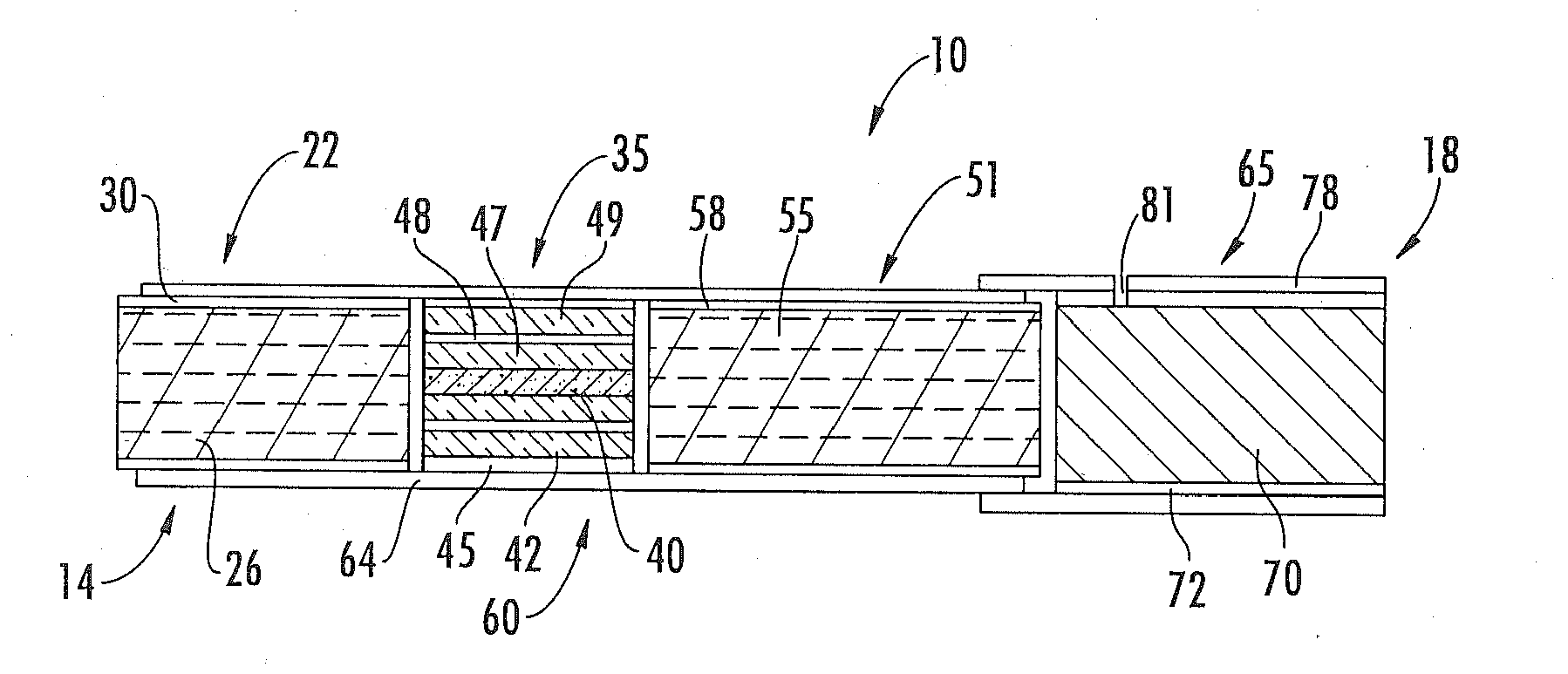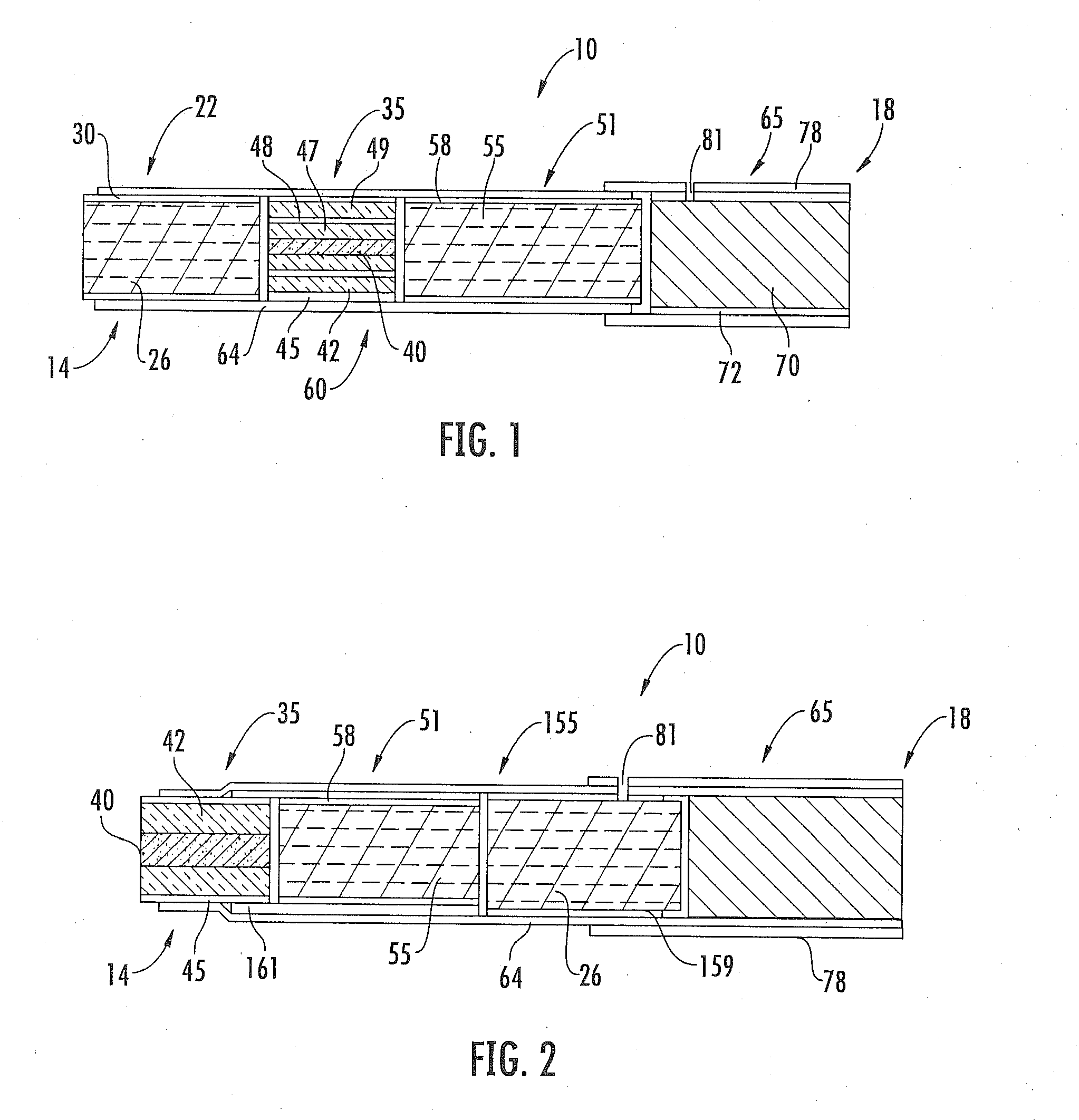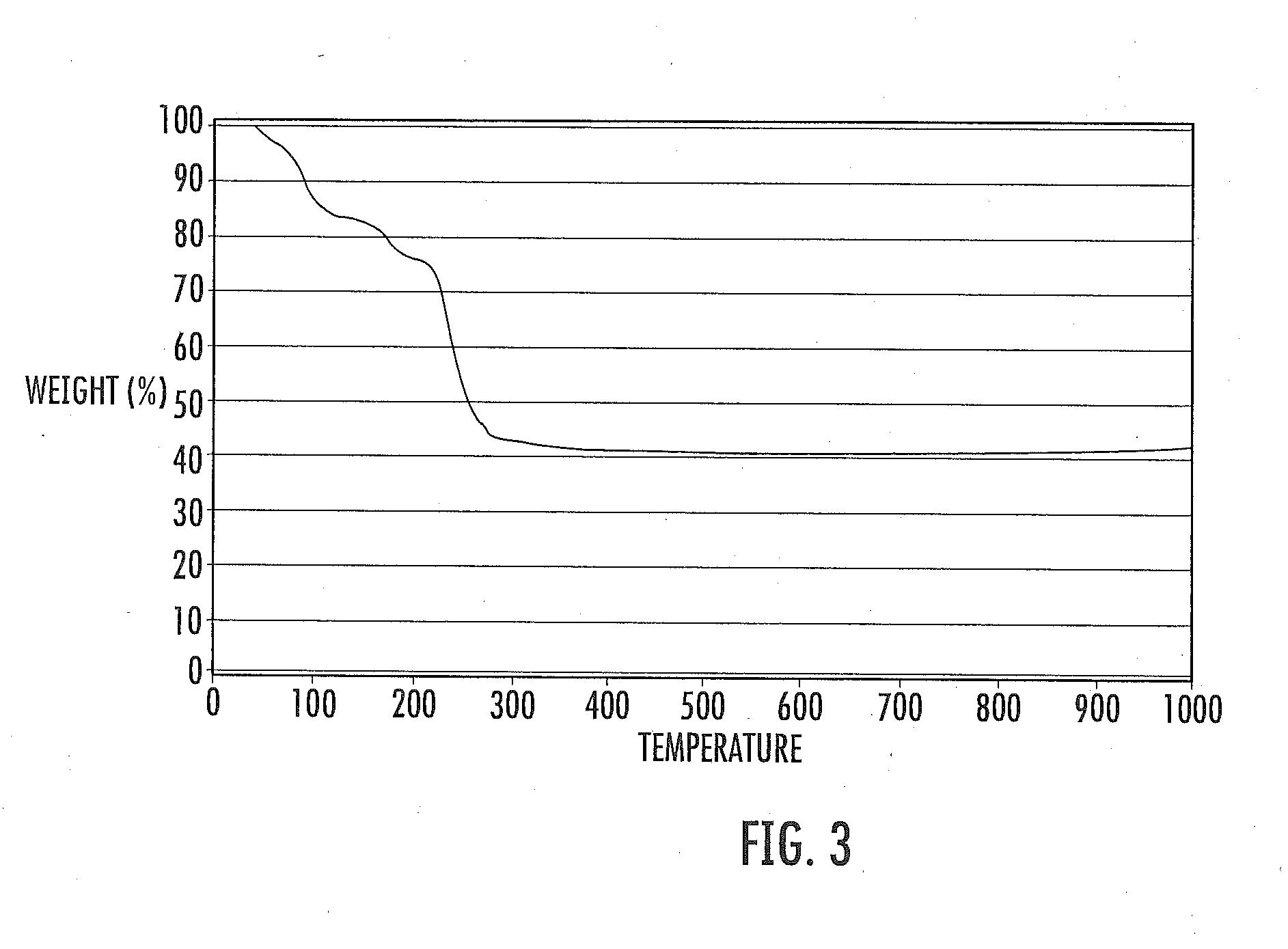Method for preparing fuel element for smoking article
a fuel element and smoking article technology, applied in the field of tobacco products, can solve the problems of difficult process for uniform application of fuel elements, and achieve the effect of reducing the difficulty of process and facilitating the incorporation of fuel elements
- Summary
- Abstract
- Description
- Claims
- Application Information
AI Technical Summary
Benefits of technology
Problems solved by technology
Method used
Image
Examples
example 1
[0091]Fuel elements from ECLIPSE brand cigarettes are carefully removed without disturbing the surrounding glass mat. The ECLIPSE fuel elements are coated with an aqueous solution of cerium nitrate hexahydrate (50% w / w) and dried overnight at 110° C. A control batch of fuel elements are treated with water only.
[0092]The treated fuel elements are subjected to a heat treatment under nitrogen pressure in a programmable Barnstead THERMOLYNE 62700 furnace. The fuel elements are heated to 400° C. at a ramp rate of 5° C. per minute and held for four hours. The minimum temperature at which a complete conversion of cerium nitrate hexahydrate to ceria takes place is determined by thermogravimetric analysis (TGA) using Model STA409 PC analyzer from Netzsch Instruments, Inc.
[0093]The thermal transition takes place in four distinct stages, which can be seen in FIG. 3. Loss of water of crystallization (219% weight) takes place between 57° C. and 200° C. Decomposition of cerium nitrate to cerium o...
example 2
[0095]The fuel element treatment process of Example 1 is repeated using the following catalyst precursors: cerium nitrate, copper nitrate, potassium nitrate, and cerium nitrate combined with palladium. The treated fuels are not subjected to heat treatment prior to combustion in the smoking article. The resulting cigarettes are smoked under 50 / 30 / 2 smoking conditions; and CO in the mainstream is measured by NDIR. Treatment of the fuel with cerium nitrate, copper nitrate, potassium nitrate or cerium nitrate / palladium chloride results in a CO reduction of 73.8%, 272%, 16.3% or 84.7%, respectively, as compared to the untreated control.
example 3
[0096]About 15 grams of cerium (III) nitrate hexahydrate (Alfa Aesar) or copper (II) nitrate hemi(pentahydrate) (Alfa Aesar) is dissolved in 7 ml of water. Next, 18 grams of graphite powder (Superior Graphite Inc.) is impregnated with one of the metal nitrate solutions and dried overnight in air. The treated graphite is calcined at 300° C. for one hour under a nitrogen atmosphere in a programmable Barnstead THERMOLYNE 62700 furnace. The ramp rate is set at 5° C. / minute. Calcination leads to decomposition of metal nitrate to metal oxide.
[0097]The metal oxide-coated graphite is ground in a pestle mortar and combined with 72 grams of milled BKO carbon powder (Barnaby and Suttcliffe), and 10 grams of guar gum. Further mixing is done in a Sigma blade mixer (Teledyne) for about an hour. Water is then added to convert the powder into plastic dough. Sufficient water is added to ensure that the plastic mix is stiff enough to hold its shape after extrusion. The moisture content of the dough a...
PUM
 Login to View More
Login to View More Abstract
Description
Claims
Application Information
 Login to View More
Login to View More - R&D
- Intellectual Property
- Life Sciences
- Materials
- Tech Scout
- Unparalleled Data Quality
- Higher Quality Content
- 60% Fewer Hallucinations
Browse by: Latest US Patents, China's latest patents, Technical Efficacy Thesaurus, Application Domain, Technology Topic, Popular Technical Reports.
© 2025 PatSnap. All rights reserved.Legal|Privacy policy|Modern Slavery Act Transparency Statement|Sitemap|About US| Contact US: help@patsnap.com



